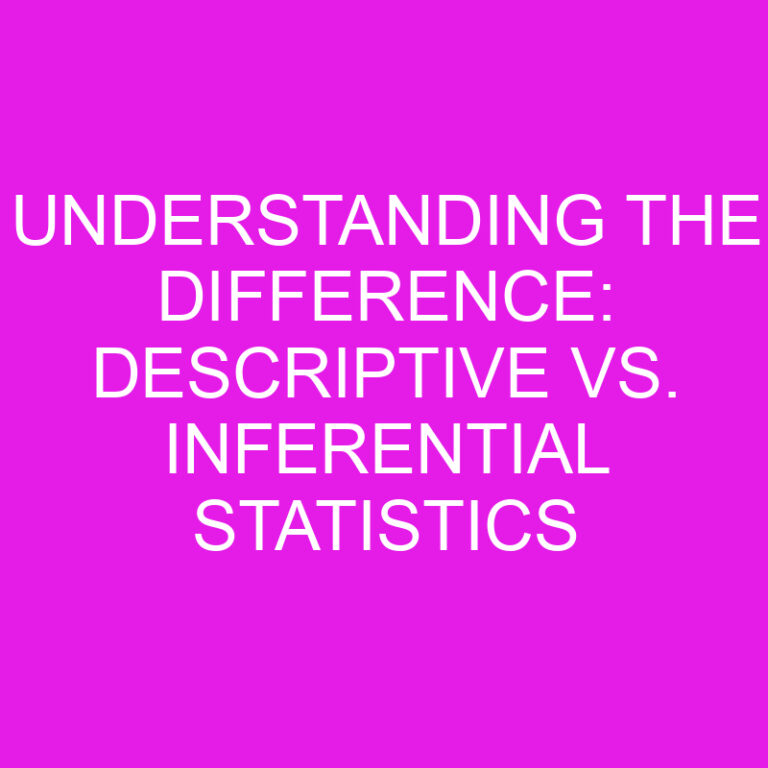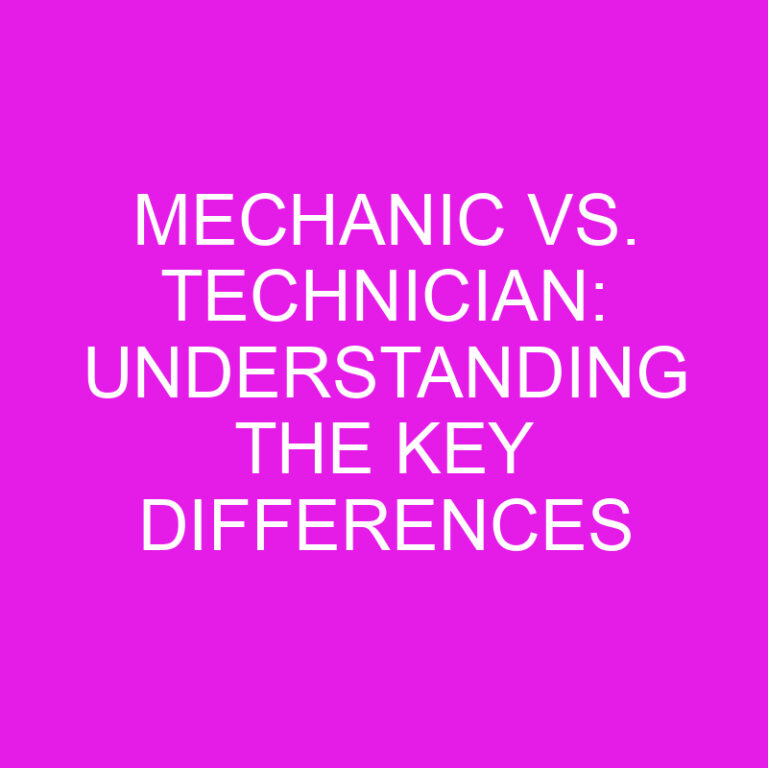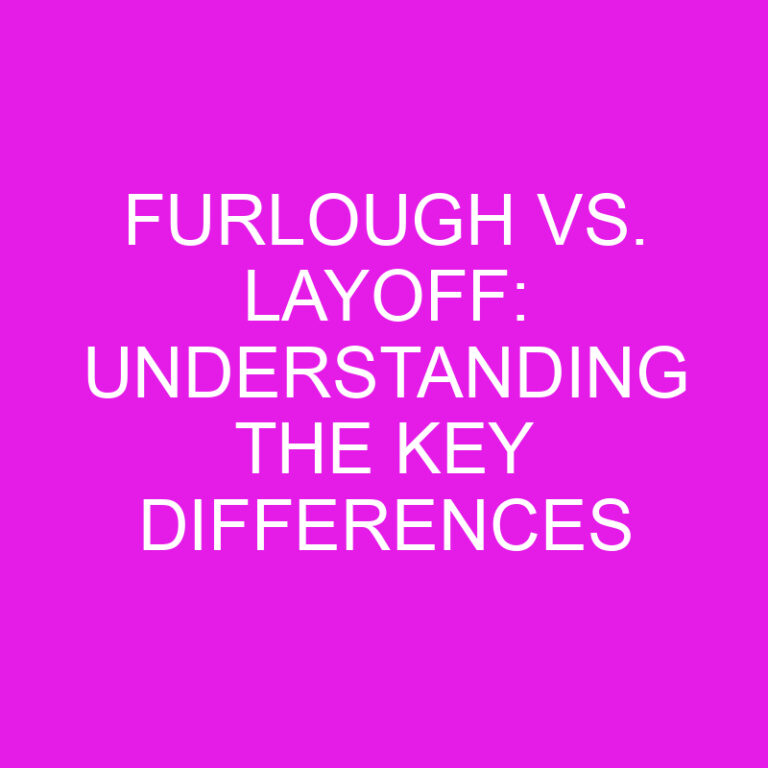
When it comes to choosing the right school for your child, there are various options available. Two popular choices are public schools and charter schools. While they may seem similar at first glance, there are some key differences that parents should be aware of. In this article, I’ll be exploring the differences between public and charter schools, helping you make an informed decision about your child’s education.
Public schools, as the name suggests, are funded and operated by the government. They are open to all students within a designated district and do not charge tuition fees. On the other hand, charter schools are independently operated and receive public funding, but they have more flexibility in terms of curriculum and teaching methods. Understanding the distinctions between these two types of schools is crucial in order to choose the best fit for your child’s educational needs. So, let’s dive in and explore the differences between public and charter schools.
Post Contents
- Key Takeaways
- What are Public Schools?
- What are Charter Schools?
- Funding and Operation
- Admissions and Enrollment
- Curriculum and Teaching Methods
- Conclusion
- Frequently Asked Questions
- Q: What are the differences between public schools and charter schools?
- Q: How do admissions and enrollment processes differ in public and charter schools?
- Q: What are the differences in curriculum and teaching methods between public and charter schools?
- Q: Can public schools offer academic programs and extracurricular activities?
- Q: What factors should parents consider when choosing between public and charter schools?
Key Takeaways
- Public schools are funded and operated by the government, while charter schools are independently operated but receive public funding.
- Public schools follow a standardized curriculum set by the government, while charter schools have more flexibility in choosing their curriculum and teaching methods.
- Public schools prioritize inclusivity and accept all students within a designated district, regardless of their academic abilities or special needs. Charter schools can be more selective in their admissions process.
- Public schools are governed by a school board, while charter schools have their own governing boards.
- Public schools are accountable to the government and undergo regular evaluations, while charter schools are accountable for meeting specific goals outlined in their charter agreements.
- Public schools do not charge tuition fees, while charter schools are also tuition-free.
- Both public schools and charter schools are required to provide equal educational opportunities to all students, regardless of their background or disability.
What are Public Schools?
Public schools are educational institutions that are funded and operated by the government. They are part of the public education system and are open to all students within a designated district. Public schools do not charge tuition fees, making them accessible to families from all socio-economic backgrounds.
Being funded by the government means that public schools have a significant responsibility to provide a quality education to all students. They follow a standardized curriculum that is in line with state or national educational standards. This ensures that students receive a consistent level of education regardless of their school or location.
One of the key features of public schools is their commitment to inclusivity. They are required to accept all students within their district, regardless of their academic abilities, background, or special needs. Public schools strive to create a diverse learning environment that promotes equal opportunities for all students.
Public schools are typically governed by a school board, which consists of elected officials or representatives from the community. The board makes important decisions about the school’s policies, budget allocation, and curriculum.
As part of the public education system, public schools are accountable to the government and the community they serve. They undergo regular evaluations and assessments to ensure that they meet the required standards of education. This accountability helps to maintain the quality of education in public schools and provides reassurance to parents and guardians.
Public schools are government-funded institutions that are open to all students within a designated district. They follow a standardized curriculum, prioritize inclusivity, and are accountable to the government and the community. Understanding the nature of public schools is important when deciding on the best educational option for your child.
What are Charter Schools?
Charter schools are an alternative to traditional public schools. They are publicly funded but operate independently. This means they have more flexibility in terms of curriculum, teaching methods, and management structure.
Here are some key points to understand about charter schools:
- Independent Operation: Charter schools are run by non-profit organizations, private companies, or even universities. They have their own governing boards and are not directly controlled by the local school district.
- Public Funding: Although charter schools are independently operated, they receive public funding. This means they do not charge tuition fees and are open to all students, just like public schools.
- Flexibility: One of the main advantages of charter schools is their flexibility. They have the freedom to design their own curriculum, choose teaching methods, and set academic goals. This allows them to tailor their approach to better meet the needs of their students.
- Accountability: While charter schools have more autonomy, they are still accountable for their performance. They have specific goals and outcomes outlined in their charter agreements, and they can be closed down if they fail to meet those standards.
- Limited Enrollment: Unlike public schools, charter schools often have a limited number of available spots. If the demand exceeds the capacity, they may hold lotteries to determine enrollment.
It’s important to note that charter schools are not for everyone. They offer a different approach to education, and it’s crucial to research and understand their specific philosophies, values, and performance before making a decision.
Funding and Operation
When it comes to funding and operation, there are some key differences between public schools and charter schools. Let me break it down for you:
1. Public schools:
Public schools are primarily funded and operated by the government. They receive funding from local, state, and federal sources. This means that they do not charge tuition fees and are open to all students within a designated district. Public schools follow the regulations and guidelines set by the government, ensuring that they provide a standardized education. The curriculum and teaching methods in public schools are generally determined by the district or state education board.
2. Charter schools:
On the other hand, charter schools are independently operated but receive public funding. They have more flexibility in terms of curriculum, teaching methods, and management structure. Charter schools are an alternative to traditional public schools, offering different educational philosophies and approaches. They have their own governing boards that make decisions regarding the school’s operations. Charter schools are held accountable for their performance and are subject to specific goals outlined in their charter agreements. These goals must be met to ensure their continued operation.
3. Autonomy and accountability:
While charter schools have more autonomy than public schools, they still have to fulfill certain requirements. If a charter school fails to meet these requirements or does not achieve the desired outcomes, it can be closed down. This ensures that charter schools maintain a certain level of quality and accountability. It’s important to research and understand the specific philosophies, values, and performance of charter schools in your area before making a decision.
Overall, the funding and operation of public schools and charter schools differ in terms of who funds them, who operates them, and the level of flexibility they have in terms of curriculum and teaching methods. By understanding these differences, you can make a more informed decision regarding your child’s education.
Admissions and Enrollment
When it comes to admissions and enrollment, public schools and charter schools have different processes and considerations. Here’s what you need to know:
- Public schools: Public schools typically have an open enrollment policy, which means they accept all students who live within their designated school district. Admissions are generally based on residency, and there are no entrance exams or specific criteria for acceptance. This means that your child is guaranteed a spot at their local public school.
- Charter schools: In contrast, charter schools often have a more selective admissions process. While they are still required to accept all students who apply, they may have limited spots available. If the number of applicants exceeds the capacity, charter schools may use a lottery system to determine enrollment. Some charter schools also have specific requirements or preferences, such as students having a particular interest or meeting certain academic standards.
- School choice: Charter schools offer parents an alternative to their local public schools. They provide an opportunity for families to choose a school that aligns with their child’s individual needs and interests. This choice can be particularly beneficial for parents who feel that their local public school may not be the best fit for their child’s education.
- Application process: When applying to a charter school, you will need to complete an application form and provide necessary documents such as proof of residency or proof of age. It’s important to note that some charter schools may have enrollment periods or deadlines, so it’s important to be aware of the timeline and submit your application on time.
- Equal opportunities: Both public schools and charter schools are required to provide equal educational opportunities to all students, regardless of their socioeconomic background, race, or disability. This ensures that every child has the right to a quality education, regardless of the type of school they attend.
Understanding the admissions and enrollment process for public schools and charter schools can help you make an informed decision about the best educational option for your child. Consider your child’s needs, interests, and the available options in your area to ensure they receive the education that will set them up for success.
Curriculum and Teaching Methods
In terms of curriculum and teaching methods, there are some notable differences between public and charter schools. Public schools generally follow a set curriculum mandated by the state or district education board. This curriculum is designed to ensure that all students are exposed to a similar body of knowledge and skills.
On the other hand, charter schools often have more flexibility in determining their curriculum. This allows them to tailor their instructional approach to meet the specific needs and interests of their students. Charter schools may choose to focus on particular subjects, such as the arts or STEM (Science, Technology, Engineering, and Mathematics), or adopt alternative teaching methods such as Montessori or project-based learning.
Charter schools’ autonomy in curriculum development and teaching methods allows for innovation and experimentation. They have the freedom to implement unique educational approaches that they believe will best serve their students. This flexibility can often lead to more personalized learning experiences and increased student engagement.
Furthermore, charter schools may also have partnerships with community organizations, businesses, or colleges to enhance their curriculum. These partnerships can provide students with valuable resources and opportunities to gain real-world experience in their chosen fields.
It’s important to note that while public schools adhere to a standardized curriculum, they may also offer various academic programs and extracurricular activities to cater to diverse student interests.
Charter schools have more autonomy in designing their curriculum and teaching methods compared to public schools. This flexibility allows them to create more specialized and focused educational experiences for their students. However, public schools also offer a wide range of academic programs and extracurricular activities to meet the diverse needs of their students. No matter which type of school a parent chooses, it’s crucial to consider the curriculum and teaching methods to ensure the educational environment aligns with the needs and goals of their child.
Conclusion
The differences between public schools and charter schools are significant and can greatly impact a child’s educational experience. Public schools follow a standardized curriculum mandated by the state or district, while charter schools have the autonomy to design their own curriculum. This flexibility allows charter schools to tailor their teaching methods and instructional approaches to meet the specific needs and interests of their students. Additionally, charter schools have the freedom to form partnerships with community organizations, businesses, or colleges to enhance their curriculum.
While both public and charter schools aim to provide equal educational opportunities, charter schools offer a more specialized and focused educational experience. Parents should carefully consider the curriculum and teaching methods when choosing the best educational option for their child. Ultimately, the decision between public and charter schools should be based on the individual needs and preferences of the student.
Frequently Asked Questions
Q: What are the differences between public schools and charter schools?
A: Public schools are funded and operated by the government, while charter schools receive both public and private funding. Public schools are accountable to the government and must follow a mandated curriculum, while charter schools have more autonomy in determining their curriculum.
Q: How do admissions and enrollment processes differ in public and charter schools?
A: Public schools are open to all students in a specific district, and enrollment is based on residence. Charter schools, on the other hand, may have a lottery system or specific criteria for admissions, which can vary depending on the school.
Q: What are the differences in curriculum and teaching methods between public and charter schools?
A: Public schools generally follow a standardized curriculum set by the state or district. Charter schools have the flexibility to tailor their curriculum to meet the specific needs and interests of their students. This allows them to offer more specialized and focused educational experiences.
Q: Can public schools offer academic programs and extracurricular activities?
A: Yes, public schools can offer a variety of academic programs and extracurricular activities. While they follow a mandated curriculum, they can still provide additional programs and activities to enhance the educational experience for their students.
Q: What factors should parents consider when choosing between public and charter schools?
A: Parents should consider the curriculum and teaching methods offered by each school. Public schools provide a standardized education, while charter schools offer more specialized and focused educational experiences. Parents should also consider the admissions process and the specific needs and interests of their child when making this decision.






